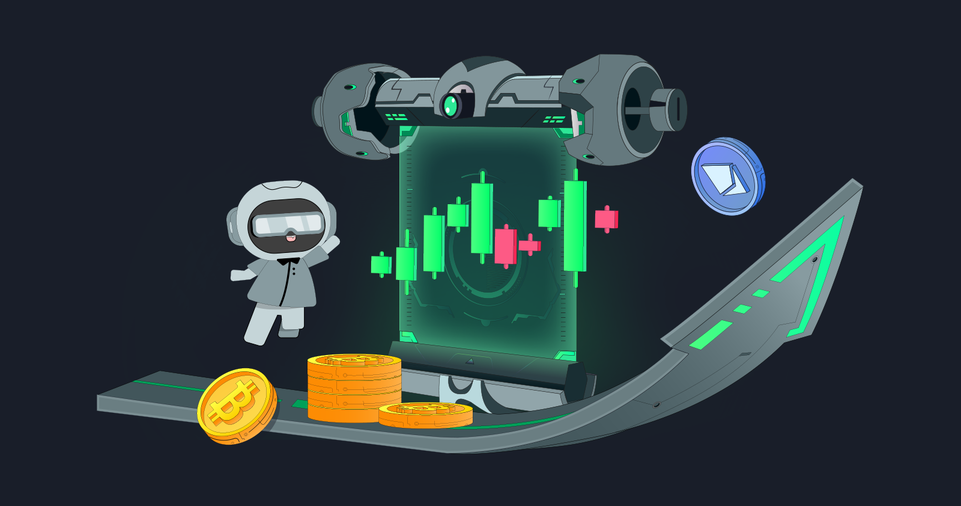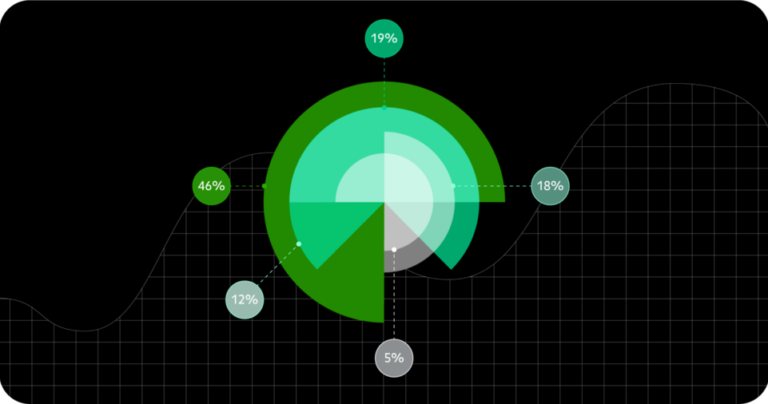Cryptocurrency investments have surged in popularity over the last decade, offering both unprecedented opportunities for wealth creation and significant risks.
The volatile nature of crypto markets makes diversification an essential strategy for investors seeking to balance risk and maximize returns.
However, diversifying a crypto portfolio is not as simple as just buying a variety of coins or tokens.
Like any other investment strategy, a well-thought-out approach is necessary to ensure that your crypto portfolio remains resilient in the face of market fluctuations.
The key to successful crypto portfolio diversification lies in spreading investments across different types of cryptocurrencies, blockchain networks, and even crypto-related assets.
It is essential to include a mix of large-cap and small-cap assets, stablecoins, and innovative projects that span multiple sectors.
A diversified crypto portfolio can help protect your wealth against the volatility inherent in the crypto space while positioning you to take advantage of emerging trends.
In this guide, we will explore the best strategies for diversifying your crypto investments like a professional.
From understanding the different categories of cryptocurrencies to effectively allocating your assets, you will learn how to build a strong, balanced crypto portfolio that can weather the highs and lows of the crypto market.
Let’s dive in!
Understand Different Types of Cryptocurrencies
The first step to building a diversified crypto portfolio is to understand the different types of cryptocurrencies available in the market.
Each category of cryptocurrency serves a unique purpose, and investing across these categories can help mitigate risks while exposing you to a broad range of opportunities.
Bitcoin (BTC): The King of Cryptocurrencies
Bitcoin (BTC) is the first and most well-known cryptocurrency.
As the “digital gold” of the crypto world, Bitcoin has established itself as a store of value, much like precious metals in traditional finance.
Bitcoin’s supply is limited to 21 million coins, which creates scarcity and has contributed to its increasing value over time.
Including Bitcoin in your crypto portfolio is a must for long-term investors who want exposure to the cryptocurrency space’s overall growth.
While Bitcoin is still subject to volatility, it is generally considered the least risky cryptocurrency due to its widespread adoption, large market capitalization, and institutional interest.
A significant portion of your crypto portfolio should be allocated to Bitcoin to ensure stability.
Altcoins: Diversification Beyond Bitcoin
Altcoins refer to any cryptocurrencies that are not Bitcoin.
These include popular coins like Ethereum (ETH), Binance Coin (BNB), Cardano (ADA), and Solana (SOL), as well as hundreds of other projects.
Altcoins tend to be more volatile than Bitcoin, but they also present unique opportunities for growth.
- Ethereum (ETH) is a leader in the smart contract and decentralized application (dApp) space. It powers a wide range of decentralized finance (DeFi) protocols and NFTs, making it an essential part of any diversified crypto portfolio.
- Binance Coin (BNB) is the native coin of Binance, one of the largest crypto exchanges in the world. It has grown in value due to its utility within the Binance ecosystem and its use for reducing transaction fees.
- Cardano (ADA) is known for its energy-efficient proof-of-stake consensus mechanism and its emphasis on academic research and peer-reviewed development.
Investing in a range of altcoins allows you to participate in different blockchain ecosystems and technologies, which helps reduce risk if one coin or project underperforms.
Stablecoins: Reducing Volatility
Stablecoins are cryptocurrencies designed to maintain a stable value by being pegged to a fiat currency, such as the U.S. dollar.
Examples of popular stablecoins include Tether (USDT), USD Coin (USDC), and Dai (DAI).
While stablecoins don’t offer the same potential for explosive growth as other cryptocurrencies, they play a crucial role in maintaining stability within your crypto portfolio.
They act as a hedge against market volatility, allowing you to quickly move in and out of investments without being exposed to large swings in value.
Stablecoins also provide opportunities for earning passive income through staking or yield farming on decentralized platforms.
Focus on Both Large-Cap and Small-Cap Coins

When diversifying your crypto portfolio, it is essential to consider both large-cap and small-cap coins.
This approach allows you to balance stability and growth potential.
Large-Cap Coins: Stability and Lower Risk
Large-cap coins are those with a high market capitalization, typically over $10 billion.
These coins are considered safer investments because they are more established, have larger user bases, and are less prone to drastic price swings.
Bitcoin and Ethereum are prime examples of large-cap coins.
By dedicating a significant portion of your crypto portfolio to large-cap cryptocurrencies, you reduce exposure to the extreme volatility that often comes with smaller projects.
As these coins are more widely accepted and adopted, they have the potential to provide steady returns over the long term.
Small-Cap Coins: High-Risk, High-Reward Opportunities
On the other hand, small-cap cryptocurrencies have a market capitalization of less than $1 billion.
These coins are riskier, as they are more likely to be affected by market sentiment, regulatory changes, or technological developments.
However, small-cap coins often present the opportunity for significant returns, as new projects or niche technologies gain popularity.
Investing a smaller percentage of your crypto portfolio in small-cap coins allows you to tap into high-growth potential while maintaining the stability offered by large-cap coins.
Examples of small-cap coins include Polkadot (DOT), Chainlink (LINK), and newer projects within the decentralized finance (DeFi) space.
Vary Your Investment Across Different Blockchain Networks
One of the key aspects of diversifying your crypto portfolio is not only investing in different coins but also spreading your investments across various blockchain networks.
Each blockchain operates under different technologies and protocols, making them susceptible to different risks and opportunities.
Layer-1 Blockchains: Foundations of the Crypto Ecosystem
Layer-1 blockchains, like Bitcoin, Ethereum, and Solana, serve as the foundational networks for most crypto projects.
These blockchains are responsible for processing transactions and ensuring the security of the network.
Each has its own strengths and weaknesses, such as Bitcoin’s proven security and Ethereum’s flexibility in smart contracts.
By investing in a mix of Layer-1 blockchains, you are exposed to different ecosystems with varying degrees of decentralization, scalability, and transaction speeds.
This diversification ensures that your crypto portfolio is not reliant on a single blockchain’s success.
Layer-2 Solutions and Cross-Chain Projects
Layer-2 solutions like Polygon (MATIC) and Optimism (OP) are designed to improve the scalability of Layer-1 blockchains by processing transactions off the main blockchain.
These solutions aim to reduce transaction costs and speed up processing times, making them essential for the future of decentralized applications and finance.
Cross-chain projects, like Polkadot and Cosmos, facilitate communication between different blockchains, enabling interoperability.
These projects are critical for the future of a multi-chain ecosystem and offer additional diversification opportunities.
ALSO READ: How to Use Blockchain for Decentralized Identity Solutions
Consider Staking and Yield Farming

Staking and yield farming provide ways to earn passive income on your crypto holdings, adding another layer to your crypto portfolio diversification strategy.
Staking: Earning Passive Income
Staking involves locking up your cryptocurrency to support the security and operations of a blockchain network in exchange for rewards.
Many cryptocurrencies, including Cardano, Polkadot, and Ethereum 2.0, offer staking opportunities.
By staking your assets, you can earn a steady stream of passive income.
Staking is particularly beneficial in a low-interest rate environment, as it offers a way to earn returns without selling your crypto holdings.
Staking is also a low-risk investment strategy compared to active trading.
Yield Farming: Higher Returns with Higher Risk
Yield farming involves providing liquidity to decentralized exchanges (DEXs) or lending platforms in exchange for rewards.
This method can offer higher returns than staking, but it also comes with increased risk, especially regarding impermanent loss (when the value of your deposited assets changes relative to others).
While yield farming can be a lucrative strategy, it is essential to carefully choose platforms with strong security protocols and research the projects involved.
Popular yield farming platforms include Uniswap, Aave, and Compound.
Diversify Between Long-Term and Short-Term Investments
A well-balanced crypto portfolio should include both long-term holds and short-term investments.
This approach helps you manage risk while allowing you to take advantage of market trends.
Long-Term Hold (HODL): Stability and Growth
Long-term investments, often referred to as HODLing (Hold On for Dear Life), involve buying and holding cryptocurrencies that you believe will increase in value over time.
These assets, such as Bitcoin, Ethereum, and top-tier altcoins, are expected to rise in value as the overall adoption of cryptocurrencies increases.
Long-term holds are less affected by short-term volatility, allowing investors to ride out market dips.
Short-Term Trading: Active Opportunities
Short-term trading involves buying and selling assets to capitalize on price fluctuations.
While riskier, short-term trades can yield significant returns, especially in volatile markets.
Trading smaller-cap altcoins or newer tokens offers opportunities for higher rewards, but it requires knowledge of market trends, chart patterns, and timing.
Allocating a smaller portion of your portfolio to short-term investments can increase your overall returns without exposing your entire portfolio to excessive risk.
Stay Informed and Rebalance Regularly
Cryptocurrency markets are highly dynamic, with rapid technological developments, regulatory changes, and market trends shaping the landscape.
To keep your portfolio optimized, staying informed is essential.
Staying Informed: Knowledge Is Power
Follow reputable crypto news sources, industry analysts, and blockchain developers to stay up-to-date on the latest trends and emerging projects.
Participate in crypto communities on platforms like Twitter, Reddit, and Discord to learn about upcoming tokens or upcoming network upgrades.
Rebalancing Your Portfolio
Rebalancing involves periodically adjusting your portfolio to reflect market conditions and your investment goals.
Over time, some assets may outperform others, causing your portfolio to become unbalanced.
Regular rebalancing ensures that your investments align with your risk tolerance and investment horizon.
ALSO READ: How to Analyze Crypto Markets Trends and Make Informed Decisions
Conclusion
Diversifying your crypto portfolio is an essential strategy for mitigating risk and ensuring long-term success in the cryptocurrency market.
By investing across a range of cryptocurrencies, blockchain networks, and crypto-related assets, you can create a resilient portfolio capable of weathering the highs and lows of the market.
Remember to balance large-cap and small-cap investments, consider staking and yield farming, and stay informed to adjust your portfolio as needed.
With these strategies in mind, you can diversify your crypto investments like a pro, positioning yourself for growth while minimizing exposure to unnecessary risk.











